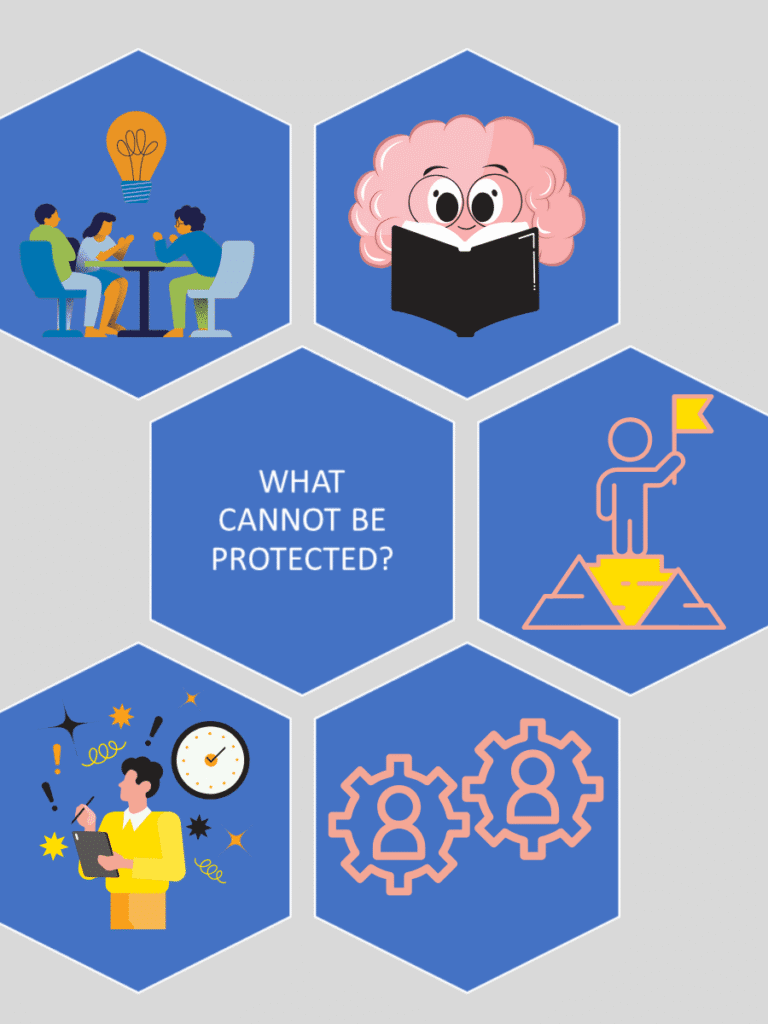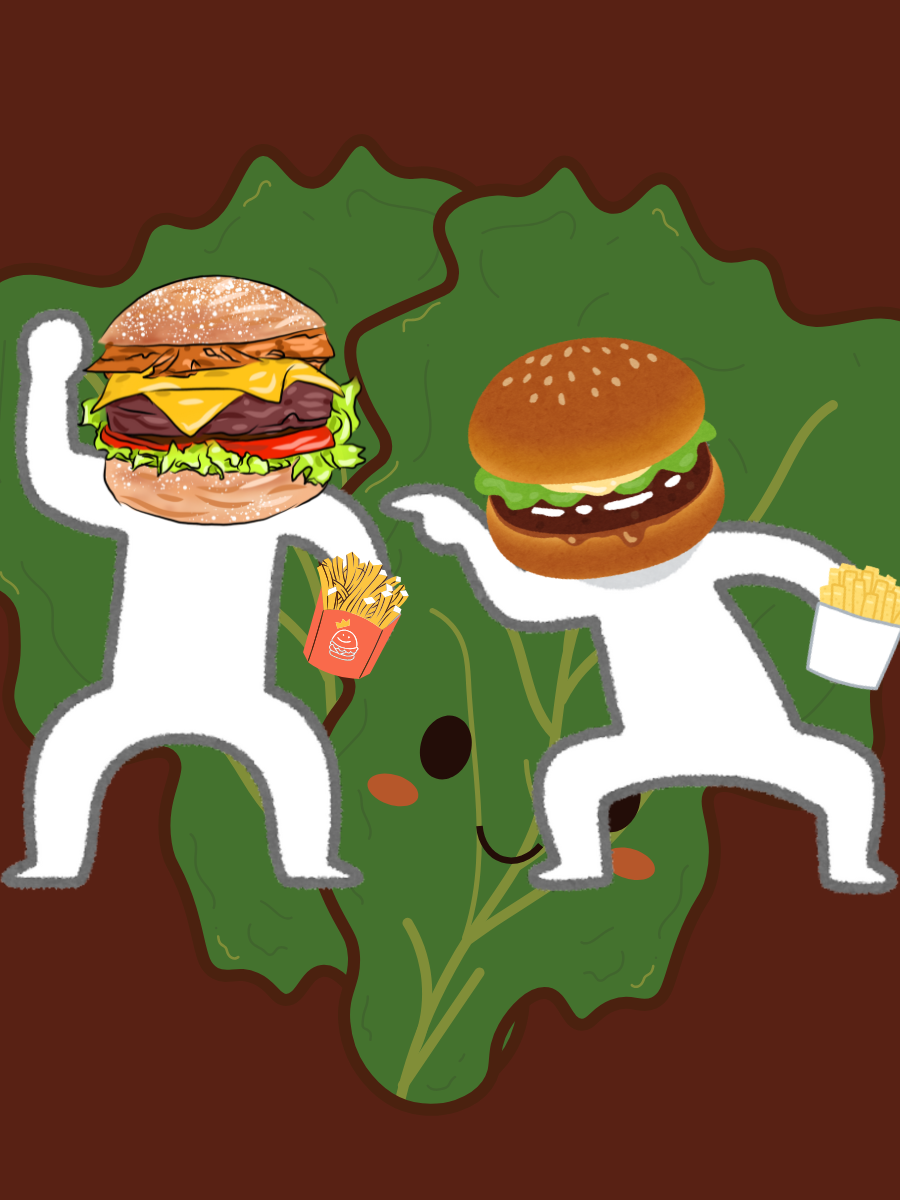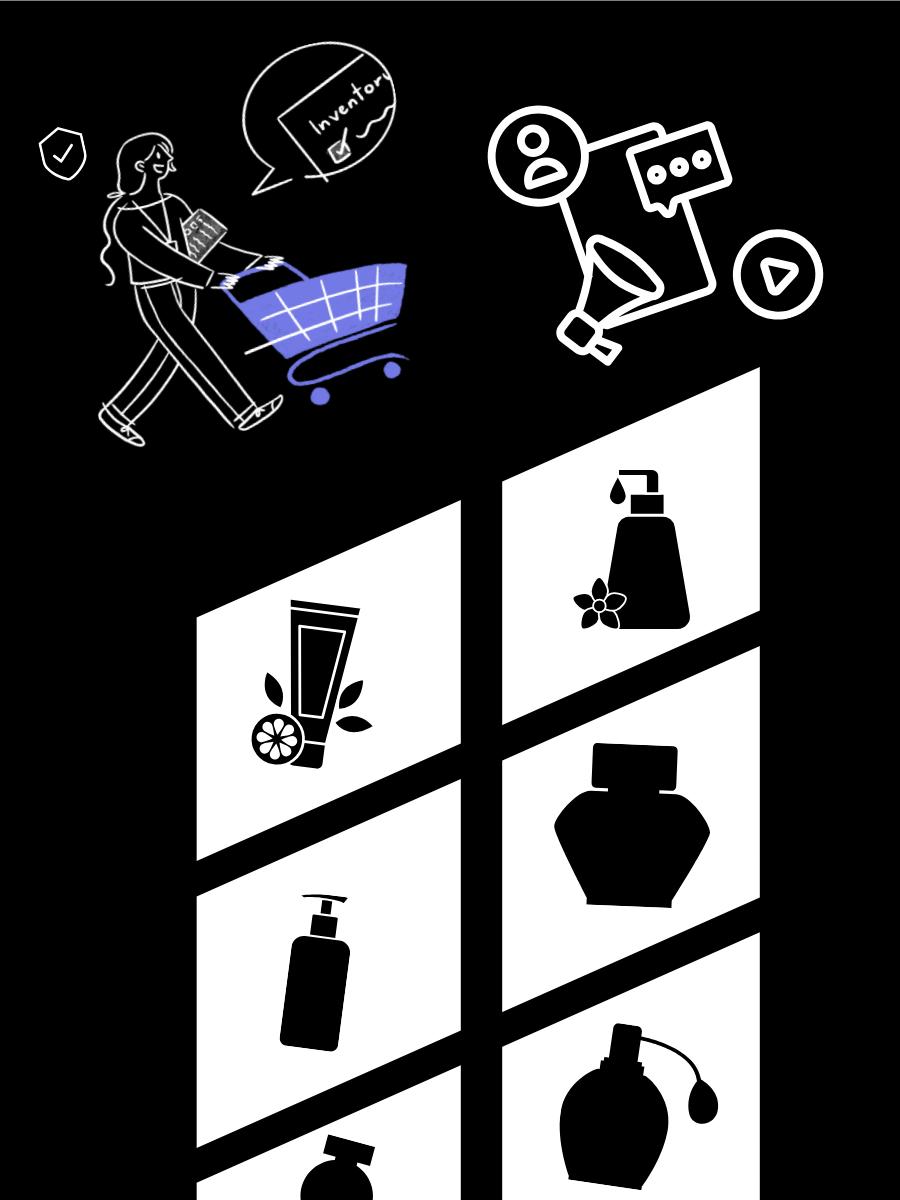Introduction
Intellectual property (IP) law refers to legal protection given to companies and individuals for their innovation, creation, and ideas. IP laws aim to foster innovation and creativity by granting creators rights over their inventions. But what is the purpose of law? Promoting cultural enrichment and facilitating the transfer of technology, and knowledge sharing are a few needs of sound IP law.
Ever wondered what can’t be protected under IP law? Concepts, general ideas, and discoveries like a new plant species fall outside its scope. However, if you invent a specific, novel way to use that plant, you can patent the method.
Knowing what cannot be protected under IP laws helps individuals save time and money by avoiding futile applications. It also clarifies how to legally use patented creations without facing legal trouble.
Abstract Ideas and Concepts
You can only patent an idea if you express it in a tangible form. A mere concept, without a prototype, drawing, or written expression can not be protected. For instance, the idea of time travel isn’t patentable, but a script that presents it in a specific, original way can be.
Common Knowledge and Facts
Facts are like building blocks of information. Common knowledge and facts belong to everyone, so no one can claim ownership. For example, numbers in a spreadsheet are just data they can’t be protected. But the unique way you organize or present that data can qualify for protection. Then comes universal truth, like gravity, the rotation of the moon around the earth, and the laws of physics, are some examples that no one claims rights over.
Let’s talk about historic dates. They are like milestones of the past. A historic date, like when India got its independence or the date when the first Indian landed on the moon, is a mere fact that cannot be protected under intellectual property rights. But if one makes a movie on a historical event, they can protect the way they tell the story, uncover new information, or create a new character.
Functional Elements and Methods
IP rights don’t cover systems, methods, or procedures. One cannot patent the way something works, like a recipe or instructions. But they can copyright the way it is written down or presented. It is the expression that can be protected, not the idea itself.
Let’s understand this with a few more examples. Think of yummy pasta. Basic instructions like “boil water” are not copyrightable. But when described in detail like “bring 2.5 cups of water to a rolling boil, then add half a pound of penne pasta” the expression becomes protectable.
How about a technical example to make our techies understand the concept better? Let’s take a simple one, the “calculate sum” function. You can not protect a basic function, but when a tech expert adds elements like explanatory comments, output formatting, or error handling, those original additions can be protected.
Non-Original or Generic Content
These elements are too common and basic to count as new creations. Words like ‘computer’ or ‘THE’ in a book title don’t qualify for copyright. IP law doesn’t protect day-to-day greetings, simple variations of existing work, or basic designs and shapes. It also excludes natural discoveries and general ideas from protection.
Non-Novel and Obvious Inventions
A patent requires that the invention be novel, i.e., not known to the public, and should not be obvious to someone skilled in that field. A simple modification like changing the colour of a toolbox cannot be patented.
Immoral, Scandalous, or Offensive Material
Content that is like an immoral idea or scandalous, or offensive material, which is obscene or defamatory, being illegal, cannot be patented to prevent the law from being used to protect offensive work. Hate speech or vulgar trademarks are a few examples.
Names, Titles, and Short Phrases
IP law does not protect names, titles, and short phrases because they lack sufficient creativity and are too common. However, if a specific phrase becomes strongly associated with a brand, it may qualify for trademark protection.
Unrecorded Creative Works
Unfixed creative works like an unrecorded song, shayari, or speech are not protected by copyright. For legal protection, the work must exist in a tangible form.
Conclusion
Intellectual property rights encourage innovation and creativity by giving exclusive rights, but these are not limitless. IP laws protect only original and distinctive expressions and inventions. They exclude common names, universal facts, physics concepts, functional elements, and obvious modifications to promote open public access. By understanding what IP law doesn’t protect, one can save time and money. This knowledge also helps individuals use the law effectively and avoid legal risks.
References
- U.S. Copyright Office, Circular 1: Copyright Basics (2020), https://www.copyright.gov/circs/circ01.pdf1.
- U.S. Patent and Trademark Office, Copyright Basics, https://www.uspto.gov/ip-policy/copyright-policy/copyright-basics4.
- World Intellectual Property Organization (WIPO), What is Intellectual Property, https://www.wipo.int/about-ip/en/[WIPO
- U.S. Copyright Office, What is Copyright?, https://www.copyright.gov/what-is-copyright/







